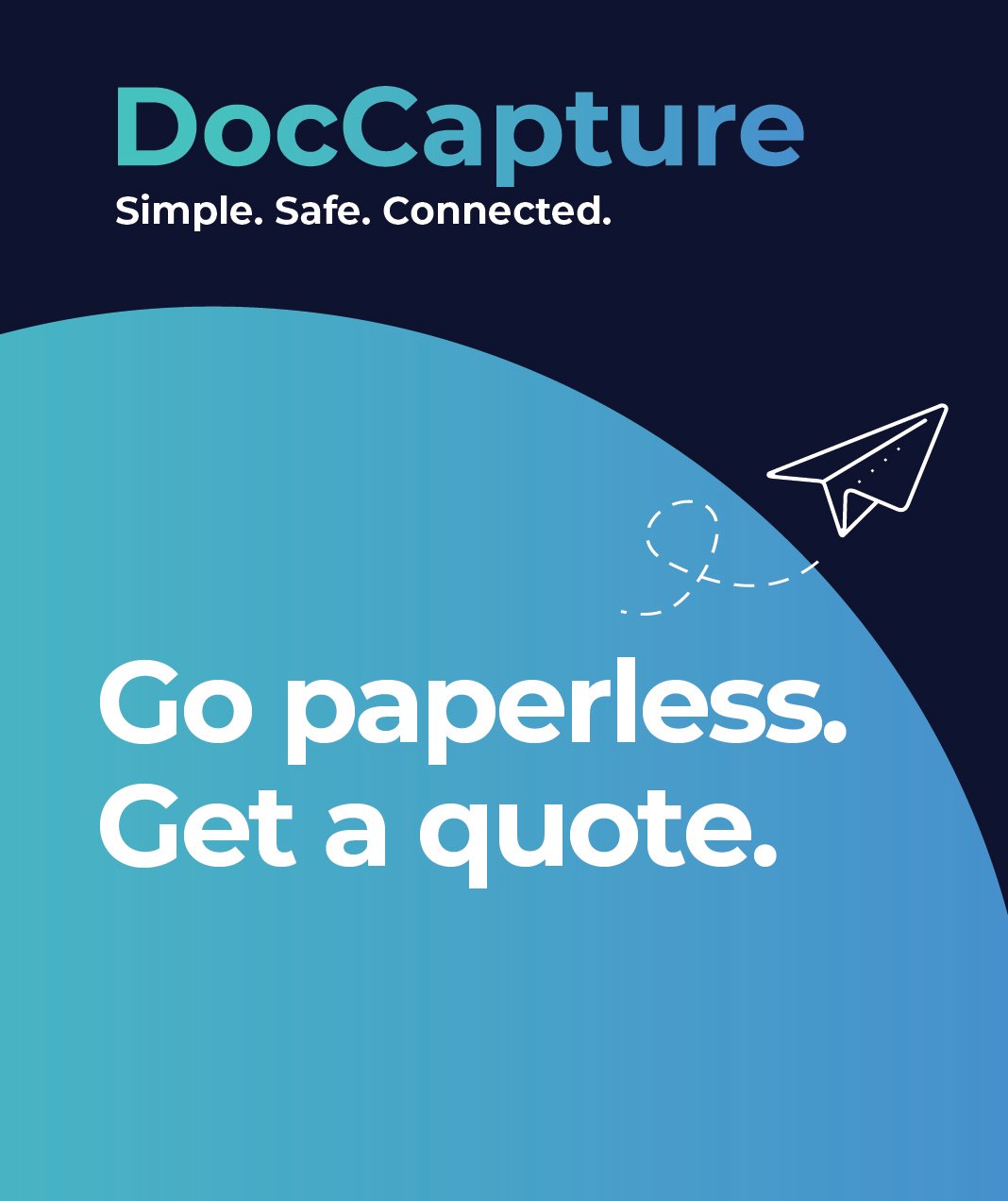Benefits of Digital Workflows in Government
Adopting digital workflows isn't just about going paperless—it's about fundamentally improving how government operates. By leveraging secure, automated systems, agencies can streamline internal processes, bolster compliance, and deliver better public service, all while cutting long-term costs.
Time and Cost Savings
One of the most immediate gains from digitization is efficiency. Automated document processing eliminates manual tasks like filing, data entry, and retrieval, accelerating workflows across departments. As highlighted in Efficiency in Government: How Document Scanning Helps, agencies that digitize their records can reduce processing time by up to 60% and reallocate staff toward mission-critical responsibilities.
Enhanced Data Security and Role-Based Access
Digital systems offer significantly greater control over who accesses sensitive information. With encrypted storage, secure backups, and role-based access permissions, agencies can enforce compliance with data protection laws while minimizing the risk of breaches. These capabilities far exceed what’s possible with physical filing systems, especially when combined with government-focused scanning solutions designed for high-security environments.
Increased Accuracy and Regulatory Alignment
Digital workflows reduce human error through automated validation, consistent formatting, and seamless data integration with existing systems. This leads to cleaner records and better compliance outcomes. As explored in Modernizing Government: The Role of Document Scanning, digital transformation supports audit-readiness and ensures agencies remain aligned with evolving regulations.
Improved Service Delivery to Citizens
Ultimately, streamlined internal processes lead to faster, more transparent interactions with the public. From permit approvals to public records requests, digitized workflows enable faster turnaround times and better tracking. This responsiveness not only builds trust but also enhances the overall citizen experience.
Overcoming Barriers to Adoption
While the benefits of reducing paperwork in government with digital workflows are clear, implementing them in practice can be complex. Government agencies must navigate risk-averse cultures, strict budget cycles, and longstanding legacy systems—all while maintaining airtight security and compliance.
Addressing Security Concerns and Risk Mitigation
Security is often the foremost concern for government decision-makers, and rightfully so. With sensitive data at stake, any transition to digital must meet stringent cybersecurity and privacy standards. Fortunately, digitization partners like DocCapture provide scanning solutions designed for secure environments, including encryption, access control, and full audit trails. Agencies can explore how digitized processes align with public-sector requirements in Government Departments and Document Imaging Services.
Navigating Procurement and Funding Cycles
Budget cycles and procurement regulations can slow down modernization efforts. However, agencies don’t need to overhaul their entire infrastructure at once. With phased implementation and scalable services, governments can begin with high-priority areas and expand over time—minimizing financial strain while still realizing early wins. As shown in Document Scanning for State and County Government Records, targeted efforts can unlock immediate value even within tight fiscal frameworks.
Building Support for Change Within Bureaucratic Systems
Resistance to change is natural in complex, hierarchical environments. To overcome this, successful digital transformation initiatives often involve cross-departmental champions who advocate for the long-term gains of digitization. Communicating early wins, aligning projects with compliance mandates, and demonstrating improved service delivery can help secure internal buy-in and pave the way for broader adoption. The insights in Document Scanning in Local Government reveal how smaller-scale initiatives have sparked wider cultural shifts within agencies.
Real-World Impacts and Long-Term Gains
The true power of reducing paperwork in government with digital workflows lies in its compounding benefits. Over time, digital transformation doesn’t just streamline day-to-day operations—it reshapes how agencies plan, scale, and serve the public.
Success Stories and Hypotheticals of Digital Transformation
Across the country, government agencies are already reaping the benefits of going digital. In counties that have digitized building plans and land use records, staff can access data instantly, improving interdepartmental collaboration and accelerating public service timelines. A great example is the initiative covered in Large Format Scanning Improves Access to Government Building Information, where digitization significantly boosted efficiency in public works and urban planning departments.
Even in hypothetical scenarios, the benefits are clear. Imagine a state agency that digitizes its licensing applications—reducing processing times from weeks to days, while offering constituents real-time status updates through an online portal. This not only enhances citizen satisfaction but also reduces the administrative burden on staff.
Supporting Transparency and Auditability
Digital records are inherently more traceable than paper. Every change, access event, and approval can be logged and reviewed, making it easier to meet transparency standards and regulatory audits. This accountability is particularly valuable for compliance-driven roles like Records Management Officers and Compliance Officers, who must ensure every document meets both legal and procedural standards.
Cross-Departmental Scalability and Future-Readiness
One of the most strategic benefits of digitization is its scalability. Once digital workflows are implemented in one department, they can often be adapted across others with minimal effort. Whether it's public health, transportation, or housing, the infrastructure is reusable—and future-ready. As detailed in Modernizing Government: The Role of Document Scanning, digital transformation lays the groundwork for smarter data use, automation, and AI-powered analytics.
How DocCapture Helps
Digital transformation in the public sector demands more than just technology—it requires a partner that understands the unique challenges of government. DocCapture delivers exactly that, offering secure, compliant, and scalable solutions tailored to agencies at every level.
Government-Focused Scanning and Digitization Services
DocCapture specializes in helping government organizations reduce their reliance on paper through expertly managed scanning and digital conversion services. Whether dealing with decades of archived records or active workflows, the company ensures every document is digitized with precision and care. Its Government Document Scanning services are specifically designed for public agencies, supporting everything from legislative archives to real-time permitting systems.
Security, Compliance, and Seamless Integration
Security isn’t an afterthought—it’s built into every stage of DocCapture’s process. Documents are scanned using chain-of-custody protocols, encrypted storage, and secure data transfer methods that align with government compliance standards, including HIPAA, CJIS, and FERPA. Integration with existing legacy systems is also seamless, ensuring minimal disruption and maximum continuity.
Tailored, Scalable Solutions for All Levels of Government
DocCapture understands that each agency’s needs are different. That’s why it offers flexible, modular solutions that scale with demand. From small municipal departments to large state agencies, DocCapture enables organizations to start where they are and grow their digital infrastructure over time—without overextending their budget or resources.
Conclusion
The case for reducing paperwork in government with digital workflows is no longer theoretical—it’s essential. From minimizing errors and improving compliance to delivering faster, more efficient public services, the long-term gains of digitization are both measurable and transformative.
By shifting away from outdated paper-based processes, government agencies can position themselves for a future that is secure, scalable, and citizen-centric. DocCapture stands ready to support that journey with compliant, tailored solutions that meet the highest standards of security and integration.
Ready to take the first step toward digital transformation?
Fill out our "Get a Quote" form and discover how DocCapture can help your agency eliminate paper and unlock long-term value.



